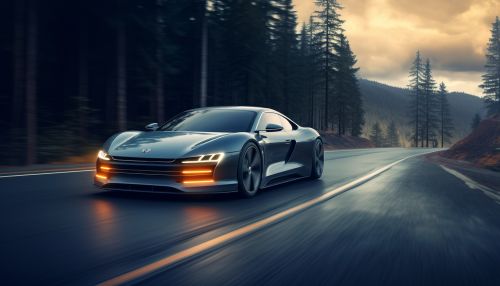Electric vehicles
Introduction
Electric vehicles (EVs) are a type of vehicle that use one or more electric motors for propulsion. They include road and rail vehicles, surface and underwater vessels, electric aircraft, and electric spacecraft. EVs first came into existence in the mid-19th century, when electricity was among the preferred methods for motor vehicle propulsion, providing a level of comfort and ease of operation that could not be achieved by the gasoline cars of the time.
History
Electric vehicles were among the earliest automobiles. Before the preeminence of internal combustion engines, electric automobiles held many speed and distance records. They were also preferred because they did not require gear changes. In the United States, electric cars outsold all other types of cars. In 1900, 28 percent of the cars on the road in the USA were electric. EVs were so popular that even President Woodrow Wilson and his secret service agents toured on them.
Types of Electric Vehicles
Electric vehicles can be powered through a collector system by electricity from off-vehicle sources, or can be self-contained with a battery, solar panels, or an electric generator to convert fuel to electricity. There are three main types of electric vehicles (EVs), classed by the degree that electricity is used as their energy source.
Battery Electric Vehicles
Battery Electric Vehicles (BEVs) are powered by electricity stored in a battery pack. BEVs use electric motors and motor controllers instead of internal combustion engines for propulsion. They derive all power from battery packs and thus have no internal combustion engine, fuel cell, or fuel tank. BEVs include – but are not limited to – motorcycles, bicycles, scooters, skateboards, rail cars, watercraft, forklifts, buses, trucks, and cars.
Hybrid Electric Vehicles
Hybrid Electric Vehicles (HEVs) are powered by an internal combustion engine and an electric motor, whose energy is supplied by the onboard battery. The battery is charged through regenerative braking and the internal combustion engine and is not plugged in to charge.
Plug-in Hybrid Electric Vehicles
Plug-in Hybrid Electric Vehicles (PHEVs) can recharge the battery through both regenerative braking and “plugging in” to an external source of electrical power. While “all-electric” range can be as little as all-electric range can be as little as 15 kilometers (9.3 mi) to as much as 80 kilometers (50 mi), a PHEV automobile could also include a gasoline or diesel engine to extend the range.
Electric Vehicle Design
Electric vehicle design and components can vary greatly between makes and models, but all electric vehicles contain a few common elements.
Motor
The motor in an electric car is a type of electric machine which converts electrical energy into mechanical energy. The most common types are DC motors and AC motors. Some motors can be used as generators, such as in regenerative braking.
Battery
The battery in an electric vehicle is used to store energy for the motor. The most common type of battery used in electric vehicles is the lithium-ion battery because of its high energy density.
Controller
The controller in an electric vehicle takes power from the battery and delivers it to the motor. It controls the speed of the motor and hence the speed of the vehicle.
Environmental Impact
Electric vehicles have several benefits over vehicles with internal combustion engines. They reduce dependence on fossil fuels, which are a major source of greenhouse gases. Moreover, they are more energy-efficient than conventional vehicles. However, the production of electric vehicles currently leads to higher emissions than the manufacturing of conventional cars. This is mainly due to the manufacture of lithium-ion batteries.
Economic Aspects
Electric vehicles are generally more expensive to purchase than conventional vehicles. However, the cost of running an electric vehicle is significantly lower. Moreover, the cost of electric vehicles has been decreasing and is expected to continue to do so.
See Also


